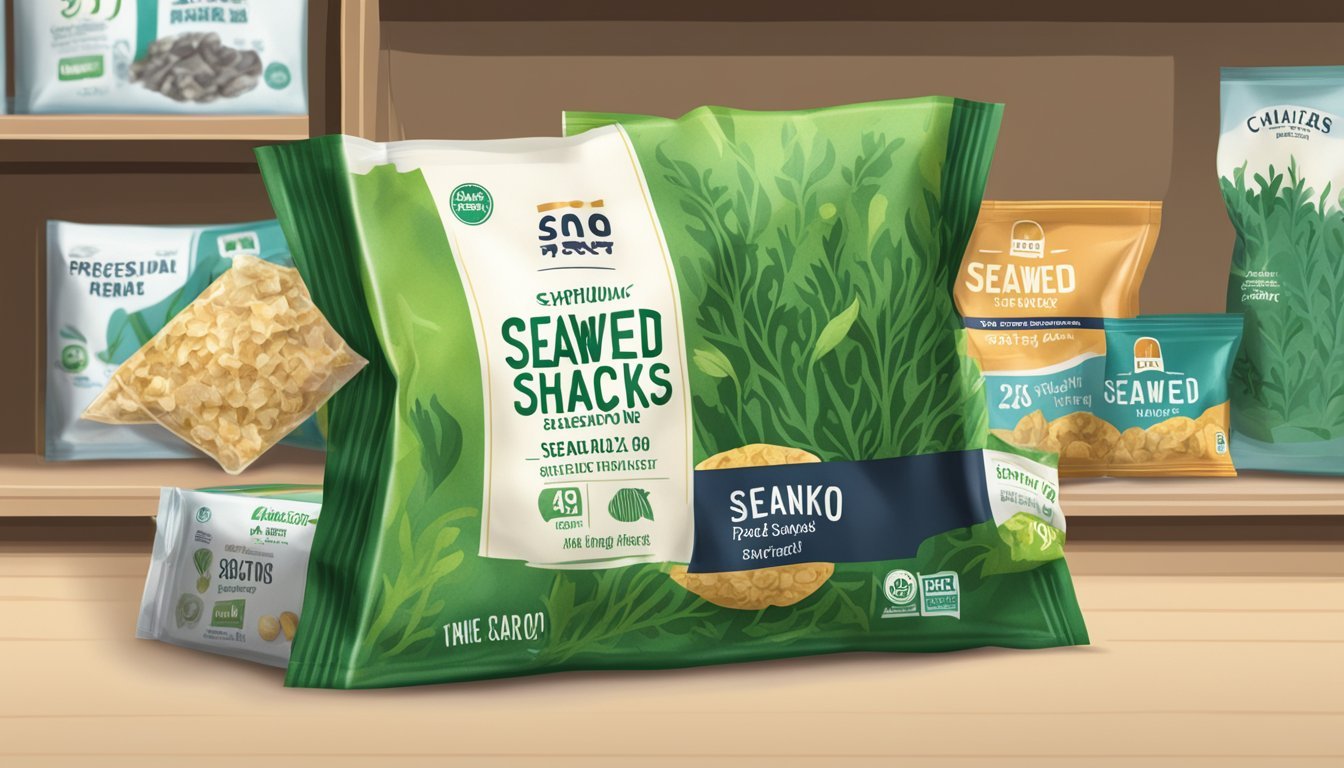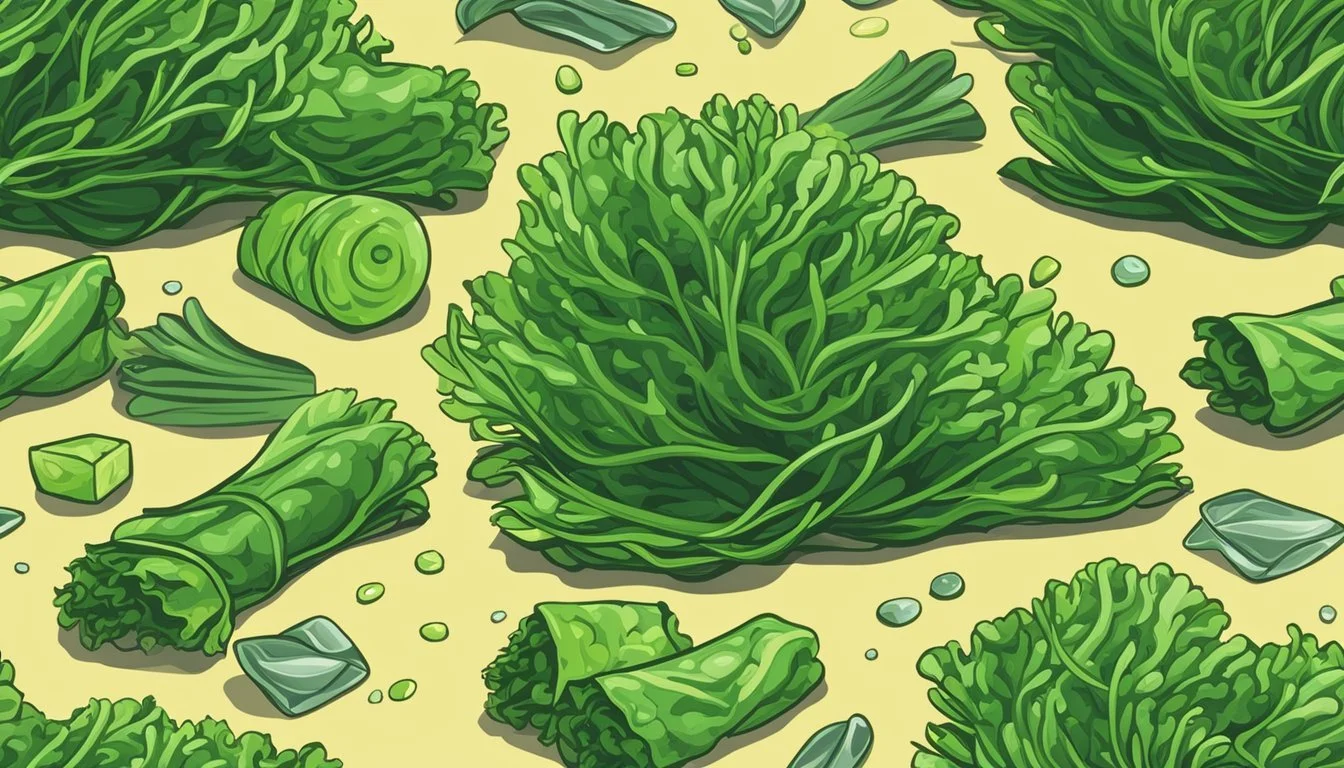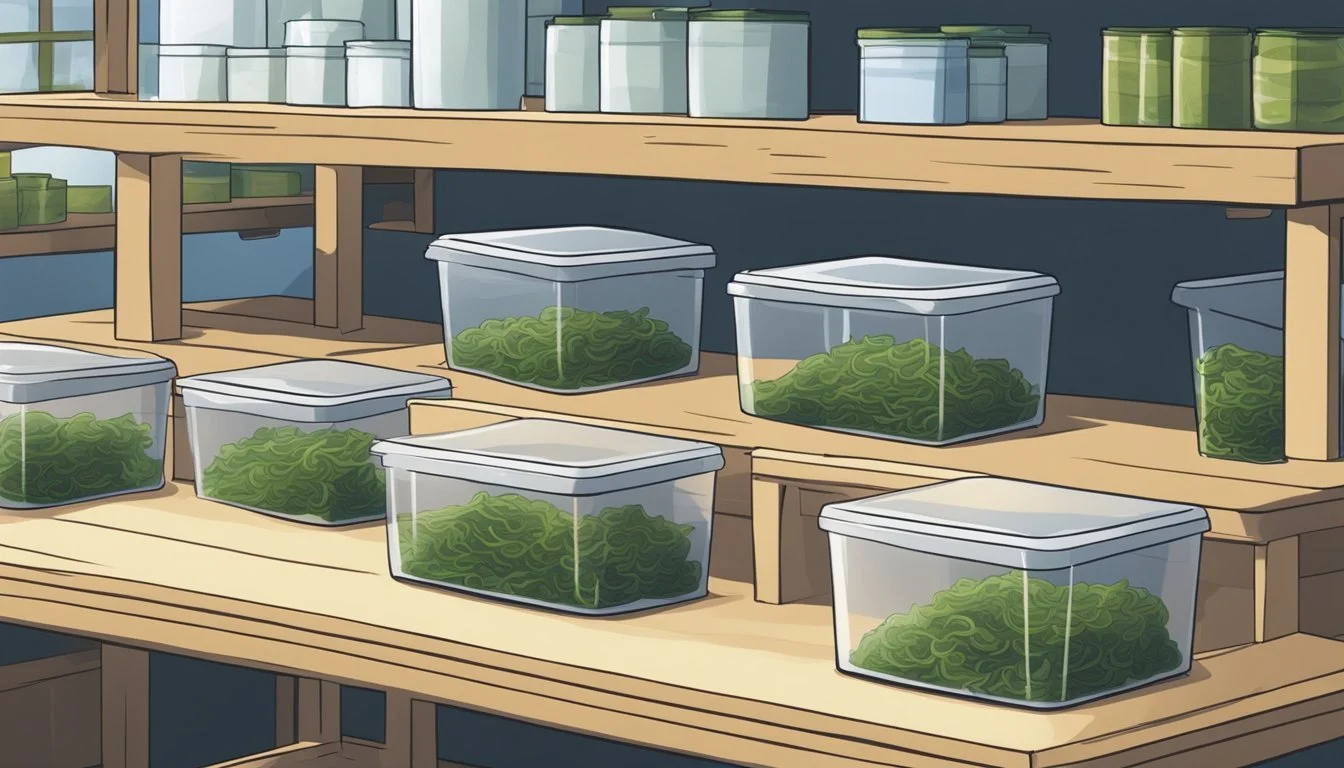How Long Do Seaweed Snacks Last?
Shelf Life and Preservation Tips
Seaweed snacks (What wine goes well with snacks?) have carved out a niche in the snack market, offering a healthy alternative that is both nutritious and convenient. The shelf life of seaweed snacks is an important factor for consumers looking to maintain the quality and flavor of their purchase. Generally, when kept unopened in a cool, dry place, seaweed snacks can remain edible for up to two years. The preservative properties of the seaweed itself contribute to this extended shelf life, allowing consumers to store these snacks much like they would other dried goods.
Once a package of seaweed snacks is opened, the clock starts ticking on maintaining their optimal taste and crispness. Typically, these snacks are best consumed within a week if stored in the pantry or refrigerator. Exposure to air and moisture after opening can quickly compromise the quality, as seaweed is hygroscopic and tends to absorb moisture from its surroundings, leading to a loss of the desired crunchy texture.
In preserving the quality of seaweed snacks, storage conditions are paramount. Factors such as humidity, temperature, light exposure, and proper sealing can all influence the longevity and taste of the product. Storing seaweed snacks properly ensures not only their durability but also the retention of their nutritional benefits, which include being a good source of vitamins and minerals.
Understanding Seaweed
Seaweed, a form of marine algae, is integral to various cuisines and is lauded for its high nutrient content. This section delves into the diversity of seaweed types, their nutritional advantages, and their culinary significance in East Asian diets.
Types of Seaweed
Seaweed encompasses a wide range of marine algae, with common varieties including:
Nori: Often used for wrapping sushi. (What wine goes well with sushi?)
Wakame: Found in soups and salads.
Dulse: Eaten as snacks or used in cooking.
Kelp: Utilized in making broths.
Kombu (how long does kombu last?): Typically used to flavor rice and soups.
Nutritional Benefits
Seaweed is nutrient-dense, providing a host of vitamins and minerals, including:
Vitamins: High in Vitamin K, and contains a spectrum of other vitamins.
Minerals: Rich source of iodine, iron, calcium, potassium, and zinc.
Other Nutrients:
Iodine: Crucial for thyroid function.
Fiber: Aids in digestion.
Protein: Essential for muscle repair and growth.
Role in Japanese and Korean Cuisine
In Japanese and Korean food (What wine goes well with Korean food?) cultures, seaweed holds a pivotal role:
Japanese Cuisine: Nori is essential in sushi-making, while wakame is a staple in miso soups.
Korean Cuisine: Often incorporated into side dishes known as banchan and used as a wrap in dishes such as gimbap.
Seaweed's presence in these cuisines is not only for its flavor but for its ability to provide a balanced diet.
Seaweed Snack Shelf Life Details
Seaweed snacks are known for their long shelf life, usually between one to two years. The key to maximizing this duration lies in proper storage to prevent spoilage.
Expiration Date
Manufacturers often provide an expiration date on seaweed snack packaging. This date should be adhered to as a guideline for optimal freshness. Beyond this date, the quality may decrease even though the product may still be safe to consume.
Signs of Spoilage
When examining seaweed snacks for freshness, look for signs of spoilage such as a change in texture or color, and an off aroma. Spoiled seaweed snacks might have a stale taste or an unpleasant smell. Mold or rot, which are visible as spots or an overall discoloration, clearly indicate that the seaweed snacks should not be consumed.
Effects of Moisture and Air
Exposure to moisture and air can significantly reduce the shelf life of seaweed snacks. Moisture can lead to mold, whereas air exposure may cause the snacks to become rancid. To maintain freshness:
Keep seaweed snacks in an airtight container.
Store them in a cool, dry place away from direct sunlight.
Optimal Storage Conditions
To ensure the longevity of seaweed snacks, attention must be given to the storage environment. The three pivotal factors are the use of airtight containers, the choice between pantry and refrigeration, and the feasibility of freezing.
Airtight Containers
Seaweed snacks retain their quality best in airtight containers. Such containers prevent exposure to air, which can lead to moisture and staleness. For added protection, one can include silica gel packets or other desiccants to absorb any residual moisture.
Pantry vs. Refrigeration
Storing in the pantry is suitable provided it is a cool and dry place with a stable temperature usually between 50-77°F (10-25°C). However, in more humid environments, using the refrigerator can help extend freshness, though proper storage is key to preventing any dampness-related spoilage.
Freezing Seaweed Snacks
Freezing can further extend the shelf life of seaweed snacks. To freeze effectively, one should use vacuum sealing to ward off freezer burn and maintain quality. It's crucial to ensure the snacks are entirely dry before freezing to prevent ice crystal formation.
Consumption and Usage
Seaweed snacks are a versatile food item that can be enjoyed on their own or used to enhance a variety of dishes. They offer a distinct umami flavor and come in different forms such as dried, roasted, or toasted.
Incorporating Seaweed into Meals
Seaweed snacks can elevate the taste of many dishes within Japanese and Korean cuisine. In sushi, toasted seaweed provides a crisp wrapper for the rice and fish, imparting a rich, umami flavor. Seaweed salad is a common side dish, often seasoned with sesame oil (how long does sesame oil last?) and soy sauce, and it pairs well with both rice and miso soup. Dried seaweed can be crumbled over salads to add a nutritious crunch.
Sushi: Seaweed serves as an essential wrapping component.
Miso Soup: A pinch of seaweed enriches the broth.
Rice: Sprinkling crumbled seaweed adds flavor and texture.
Grocery Store: Look for seaweed snacks in the Asian food section.
Snacking on Seaweed
Seaweed snacks are a nutrient-dense option for those looking for a quick and healthy treat. Roasted and seasoned seaweed snacks are available at grocery stores and can be eaten right out of the package. When consuming seaweed snacks, moderation is key due to the presence of iodine and trace elements like lead, cadmium, and arsenic. Limiting consumption to one serving per day, particularly for children, is advisable.
Dried Seaweed Snacks: Ideal for snacking with minimal preparation.
Roasted Seaweed Snacks: (how long do roasted seaweed snacks last?) Offer a crunchy texture and are often lightly salted or seasoned.
Toasted and Seasoned Seaweed: Comes in individual packs for convenience.
Preservation Techniques
The preservation of seaweed snacks primarily relies on drying, roasting, and seasoning to extend their shelf life and maintain their texture and flavor.
Drying Methods
Drying is a crucial preservation method for seaweed snacks, where water content is significantly reduced to inhibit microbial growth. Two common drying techniques are:
Sun-drying: Seaweed is laid out under direct sunlight until moisture content is low, typically resulting in a crisp texture.
Air-drying: This technique uses dehydrators or ambient air flows to gently remove water from the seaweed.
By using these methods, seaweed can be stored for extended periods without losing its nutritional value.
Roasting and Seasoning
Once seaweed is dried, further preservation and flavor enhancement are achieved through:
Roasting: Seaweed sheets are lightly roasted to add crunchiness and to bring out a nutty flavor profile.
Seasoning: The addition of seasonings, especially salt, not only enriches the taste but also acts as a preservative. Occasionally, sesame oil is used to enhance flavor and texture, while also contributing to the conserving process.
Roasted and seasoned seaweed snacks usually maintain quality over time when stored properly in airtight containers.
Health and Safety Considerations
When indulging in seaweed snacks, it's imperative to consider certain health and safety aspects to prevent potential risks associated with contamination.
Identifying Contaminated Seaweed
Contaminated seaweed may pose health risks, such as exposure to toxic metals like lead, cadmium, and arsenic, which could be harmful if ingested in significant amounts. Indicators of contamination include:
Discoloration: Unusual coloration may signify spoilage or chemical contamination.
Odor: Off-putting or abnormal smells are clear signs that the seaweed is no longer safe to consume.
Texture: A slimy or overly brittle texture can indicate that the seaweed has been compromised.
Recommendations for Safe Consumption
To minimize the health risks and ensure food safety, consumers should adhere to the following advice:
Source: Purchase seaweed snacks from reputable suppliers known for maintaining quality and safety standards.
Frequency: Limit intake to no more than one serving per day, especially for children, due to the significant presence of iodine and potential heavy metals.
Storage: Store seaweed snacks in a cool, dry place and reseal the packaging after opening to extend shelf life and prevent deterioration.
Creative Variations of Seaweed Snacks
Seaweed snacks have emerged as a versatile and nutritious option for those seeking low-calorie foods high in fiber. They offer the benefits of being both flavorful and beneficial for health-conscious individuals.
Homemade Seaweed Snack Recipes
Homemade Roasted Seaweed Snack: To craft a simple yet delicious roasted seaweed snack, one needs only a few sheets of thin sushi-grade seaweed. The process involves lightly brushing the seaweed with a mixture of sesame oil, a pinch of salt, and sometimes a touch of sugar and vinegar for a subtle complexity. The snack is then roasted in a preheated oven until it becomes crisp, offering a pleasing crunch with each bite.
For a twist on the traditional flavor, one might experiment by adding different seasonings such as:
Toasted sesame seeds (how long do sesame seeds last?) or a dash of cayenne pepper for heat
A sprinkling of nutritional yeast for a cheesy note
A dusting of matcha powder (how long does matcha powder last?) for an earthy zest
Seaweed Snacks in Sushi Rolls and Salads: Beyond snacking on its own, seaweed can be integrated into a variety of dishes. One popular way to enjoy it is wrapped around sushi rolls, encasing a combination of ingredients like fresh cucumber, lettuce, and a hint of vinegar. Alternatively, seaweed can be crumbled into salads, providing a unique texture and boosting the fiber content of the meal.
Sweet and Savory Combinations: A less conventional approach involves pairing seaweed with sweet elements. One might find the combination of seaweed coated with a blend of maple syrup and salted notes intriguing for its complexity. The sweet and savory dance on the palate makes for an adventurous snacking experience.
In summary, seaweed snacks can be enjoyed in their simple, roasted form or used as a creative component in a spectrum of culinary creations, highlighting their diverse potential as a low-calorie, nutritionally dense food.









